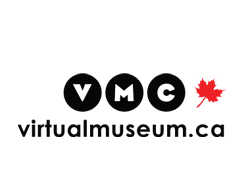Home | Major Sporting Events | British Empire Games/Commonwealth Games
1994 Commonwealth Games - Victoria
PreviousNext
The 1994 Commonwealth Games, held in Victoria, B.C. energetically encouraged spectators and athletes alike to 'catch the spirit' of integrity and open- hearted exchange that had come to define the event by the end of the twentieth century. Hosting the Commonwealth Games for the fourth time in Canada, organizers built upon shared traditions of 'competitive sportsmanship and fair play', placing renewed emphasis upon inspiring individual athletes to fulfill their potential rather than encouraging competition between nations. Notably, their efforts translated into a more inclusive version of the Commonwealth Games.
For the first time, over 90 disabled athletes from 16 countries competed in six exhibition events spanning athletics, aquatics and lawn bowling. Although these competitors received separate awards that did not contribute to the overall medal count of the nations they represented their achievements to lay a foundation for the full integration of para sports into regular competition that would follow at the 2002 Commonwealth Games in Manchester, U.K.
Michael Edgson, the most decorated para athlete in Canadian history, played an important organizational role in the 1994 Commonwealth Games. Diagnosed with a visual impairment as a child, Edgson was encouraged by his parents to find a sport that would inspire him to fulfill his potential regardless of his disability. Empowered by their support, he turned to aquatics and went on to win record numbers of championship medals in international para swimming events between 1984 and 1992. Just as the Commonwealth Games promoted individual achievement over competitive rivalries, Michael Edgson believed greatness was defined by humbly striving for one's personal best. Seeking ways to translate these shared values into new competitive opportunities for disabled athletes, he organized the field of play for able bodied and para swimming events at the 1994 Commonwealth Games in Victoria.
Organizers in Victoria also set new precedents by working closely with a Native Participation Committee to better represent First Nations people in the cultural component of the 1994 Commonwealth Games. Promoting respectful cross-cultural exchange, Coast Salish, Nuu-chah-nulth and Kwagiulth communities organized war canoe races, cultural festivities and traditional welcome ceremonies. The striking medals awarded to athletes were also designed by indigenous artists, inspired by the artistic and cultural traditions of local First Nations communities.
The cultural contributions indigenous people made to the 1994 Commonwealth Games were complemented by the thrilling achievements of accomplished athletes like distance runner Angela Chalmers. Chalmers had already won a bronze medal in the Women's 3,000 metre race at the 1992 Olympic Games in Barcelona. Inspired by her Sioux heritage, Chalmers used her success and heightened visibility as an international athlete to promote aboriginal empowerment, particularly among disadvantaged youth. Honoured as Canada's flag bearer in the opening ceremonies of the 1994 Commonwealth Games, she went on to win gold in the women's 3,000 metre race, defending a feat she had previously achieved at the 1990 Commonwealth Games in Auckland.
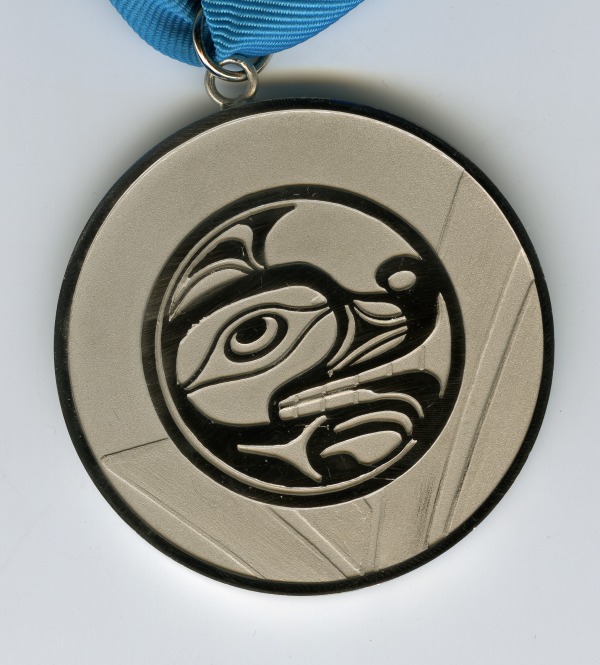
Tradition and transformation were the themes for the medals of the Victoria Commonwealth Games. The silver medal depicts a wolf from the Nuu-Chah-Nulth nation and was carved by Art Thompson of the Ditidaht Band.
Collection: Canada's Sports Hall of Fame
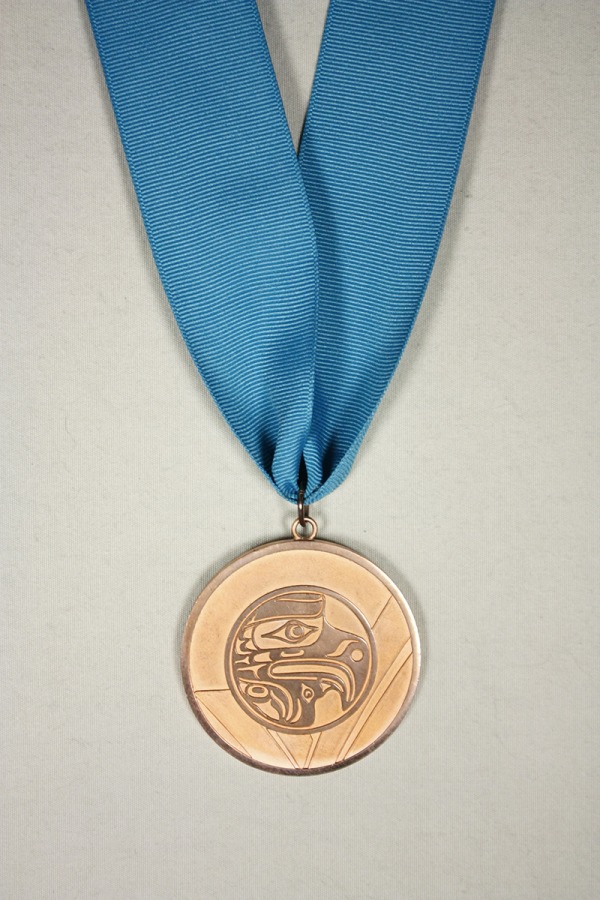
The bronze medal from the 1994 Commonwealth Games depicts a thunderbird from the Kwagiulth nation, created by Richard Hunt of the Fort Rupert Band. Magical connections between the natural world and the supernatural worlds are celebrated in the medals.
Collection: Canada's Sports Hall of Fame
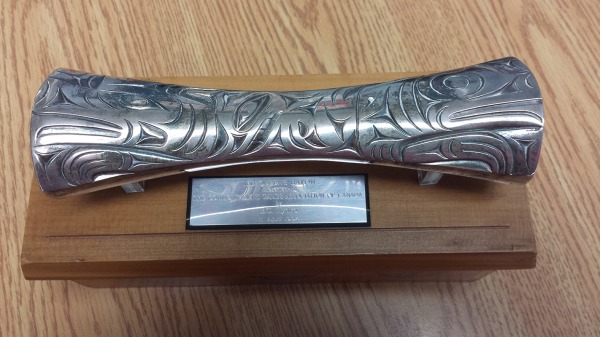
The Queen's baton was crafted in the shape of a soul catcher, acknowledging the power of the Shaman. It was made of sterling silver and engraved with the images of birds and animals. The designs of the baton and torch were created by artists of the three First Nations on Vancouver Island.
Collection: Commonwealth Games Association
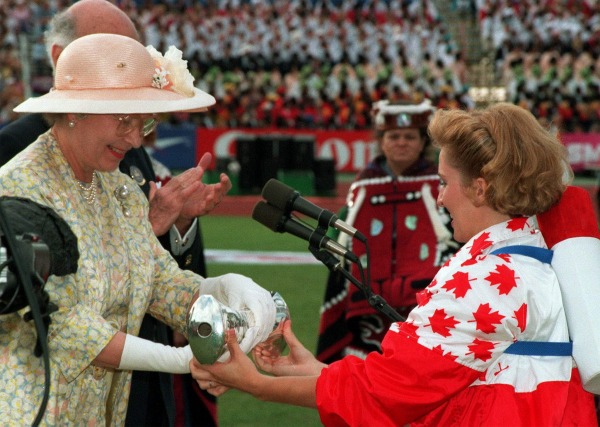
The Queen's baton was brought into the stadium by Myriam Bedard, Olympic gold medallist in biathlon at the 1994 Olympic Winter Games. She came in on roller skis, carrying the baton on her back. Michael Smith, a decathlete, carried it on the first leg of the relay from Buckingham Palace.
Collection: CP PHOTO/Andrew Vaughan
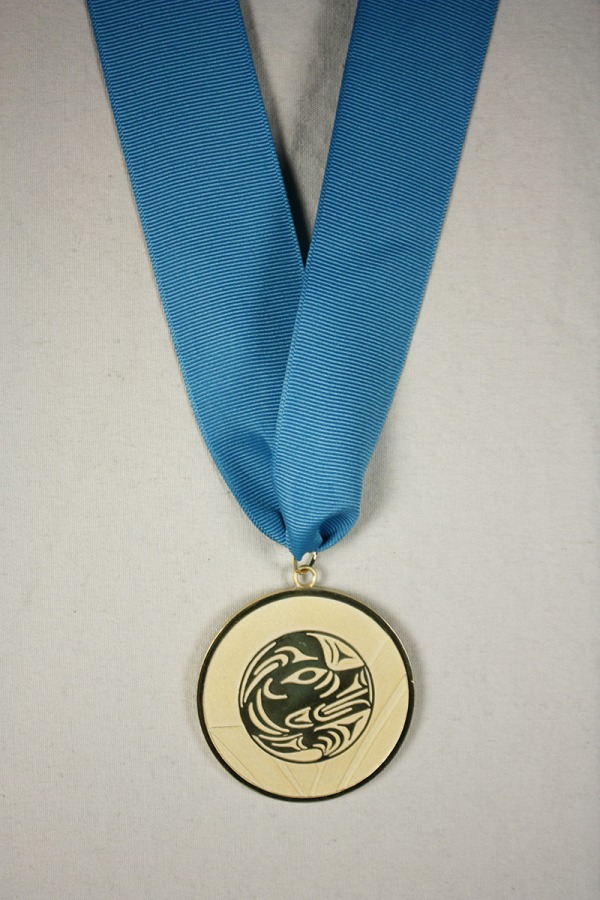
The gold medal for the 1994 Commonwealth Games was carved with the image of a wolf from the Coast Salish Nation, created by Charles Elliott of the Tsartlip Band. The front side had the official crown and chain insignia of the Commonwealth Games Federation. This was the first time individual designs were used on the reverse side.
Collection: Canada's Sports Hall of Fame
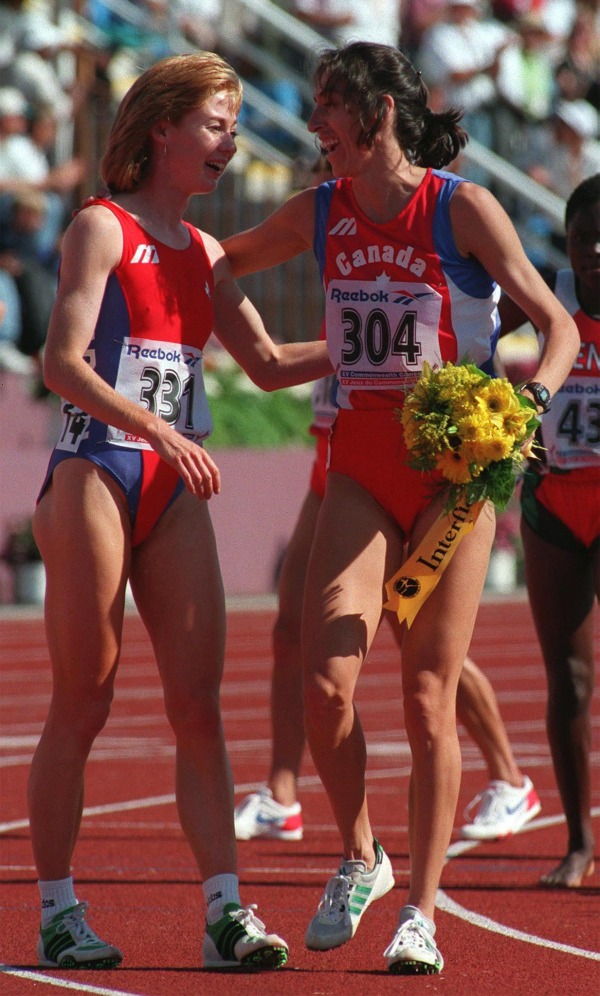
Angela Chalmers successfully defended her title in the 1,500 metre race at the 1994 Commonwealth Games in Victoria. As a First Nations athlete, she took great pride in her Sioux ancestry and today is an inspiration to aboriginal youth across the country.
Collection: CP PHOTO/Ken Gigliotti

Michael Edgson started his para swimming career at the 1984 International Games for The Disabled, now recognized as the 1984 Paralympic Games. By the end of his career he had amassed 32 medals and 20 world records. His integrity and passion marked his career as an athlete.
Collection: Michael Edgson

Michael Edgson continued to give back what sport had given to him by working on the swimming component of the Victoria Commonwealth Games. His message to all young athletes is that inclusion recognizes who you are and what you can do, not what others think you should be.
Collection: Canada's Sports Hall of Fame
Previous Next


